Entries in the mob (5)
The Mob Museum is coming soon!
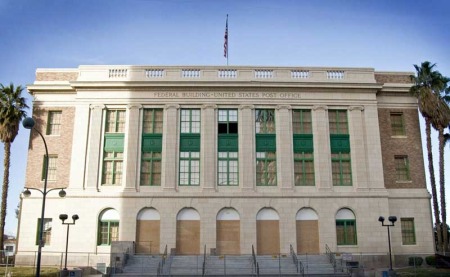
National Museum of Organized Crime and Law Enforcement opens in Las Vegas on February 14, 2012
There are two sides to every story — and then there’s the truth. Uncover the real life battle between organized crime and law enforcement when The Mob Museum opens to the public on Valentine’s Day, February 14, 2012. The Mob Museum, the National Museum of Organized Crime and Law Enforcement, is a world-class destination in downtown Las Vegas. It presents an exciting and authentic view of the mob’s impact on Las Vegas history and its unique imprint on the world.
The Museum, which has already acquired one of the most iconic artifacts in mob history – the brick wall from the St. Valentine’s Day Massacre, will open on the 83rd anniversary of the infamous Massacre, considered one of the most significant days in Mob history. Admission is $18 plus tax for adults ages 18-plus; $12 plus tax for children ages 5 to 17 and students ages 18 to 23 with ID; $14 plus tax for seniors, military, law enforcement and teachers; and $10 plus tax for Nevada residents of all ages. Museum hours will be Sundays through Thursdays from 10 a.m. to 7 p.m.; and Fridays and Saturdays 10 a.m. until 8 p.m.
With tales so intriguing they need no embellishment, The Mob Museum reveals an insider’s look at the events and people on both sides of this continuing battle between organized crime and law enforcement. True stories of mob history are brought to life in a bold and contemporary style via engaging exhibits and multi-sensory experiences. The Mob Museum puts the visitor in the middle of the action through high-tech theater presentations, iconic one-of-a-kind artifacts and interactive, themed environments.
The Museum’s board of directors is headed by Ellen Knowlton, former FBI Special Agent in Charge, Las Vegas Division, and a 24-year FBI veteran. The Mob Museum boasts a highly respected board including professionals from local and state government, law enforcement, the judicial system, media and the business community. A key visionary for the project and current board member is former Las Vegas Mayor Oscar B. Goodman, a previous go-to defense attorney who made a name for himself representing such reputed mobsters as Meyer Lansky, Frank “Lefty” Rosenthal and Anthony Spilotro, among others.
Artifacts to be integrated throughout the Museum’s interactive exhibits provide an insider’s look into many of organized crime’s biggest names, including, Alphonse Capone, Dion O’Bannion, George Moran, Charlie “Lucky” Luciano, Meyer Lansky, Ben Siegel, Sam Giancana, Joe Bonanno, Frank Rosenthal, Mickey Cohen, Tony Cornero and Tony Spilotro to name just a few. The Museum is located in what many consider the ultimate artifact, the former federal courthouse and United States Post Office. Completed in 1933 and listed on the Nevada and National Registers of Historic Places, it housed the very courtroom where, in 1950, one of 14 national Kefauver hearings was held to expose and control organized crime in America. Meticulously rehabilitated for The Mob Museum, the building is significant not only for its neo-classical architecture reminiscent of the period in which it was built, but also for the historic events that unfolded inside of it.

The Museum is also working with the FBI and many famous undercover agents who made a career of fighting the Mob, including legendary agents Joe Pistone who infiltrated the Mob posing as a small time jewel thief, Donnie Brasco; and Cuban-born Jack Garcia who successfully ingrained himself into the Gambino family.
In addition, many items relating to historic eras and specific industries, such as prohibition, money laundering and gaming, will help to tell the story of the mob’s influence on these areas. Items and artifacts relating to law enforcement’s role in helping to eradicate and control the Mob, such as weapons, wiretapping tools and tactics and crime scene photos, will also be part of The Museum experience.
Three major exhibits in The Museum include Mob Mayhem, The Skim and Bringing Down the Mob. Mob Mayhem furthers the understanding of violence as a way of life within the world of organized crime. This exhibit is the setting for the Museum’s iconic artifact—the wall from Chicago’s St. Valentine’s Day Massacre – and sets the stage for law enforcement strategies that will combat it.
The Skim, yet another exhibit within The Museum, dissects the illegal skimming of profits off the top of a casino’s earnings, which was commonplace in Las Vegas for decades and supplied money to the hidden ownership of some casinos – ownership that was most often hidden from regulators.
Bringing Down the Mob is a highly interactive exhibit that focuses on wiretapping – one of the most important tools used to effectively investigate and prosecute organized crime cases beginning in the late 1960s. Visitors will learn about the technology, listen in on the mob, learn to interpret coded conversations, examine photos and surveillance footage, take part in a weapons training exercise and learn about living a new life in witness protections programs.
http://cdn.video.lasvegassun.com/media/video/2008/04/20080515_history5_720p.mp4
Mid-Century Modern Weekend is HERE
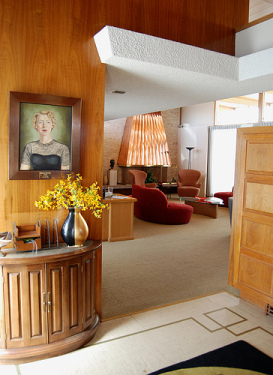
It's HERE!!! Be sure to get your tickets, it sounds like a wonderful way to connect with Las Vegas' post-war history and its architecture!!!!!
We are thrilled that the ADAS (Architectural and Decorative Arts Society) has carried on the Mid Century Modern celebration that we started a few years ago.
If you love the Mid-Century Modern lifestyle, history, architecture, own a mid-mod home or want to take a tour of mid-mod homes in Las Vegas, this is the event for you.
Tickets to the Las Vegas Mid-Century Modern Weekend are on sale now.
POP, BOOM LIFESTYLE REVOLUTION
ADAS Mid-Century Modern Weekend
Wednesday, October 19 – Sunday, October 23, 2011
ADAS (Architecture and Decorative Arts Society) celebrates all
things mid-century modern with an extraordinary five day event.
A pass for all five days is a very reasonable $100; $90 for ADAS
members. Included is the kick off mixer, general admission to
the Atomic Testing Museum, mid-century vendors; mid-century
architectural seminar; mid-century dinner; fashion show; silent
auction; three mid-century discussion panels; Morelli House
reception; four-hour mid-century neighborhood bus tour. Visit
ADAS website at www.adas-lv.com to purchase your tickets. Space
is limited on most events.
Wednesday, October 19
ADAS kicks off the mid-modern experience by hosting a mixer at the
Atomic Testing Museum, 5:30 – 7:30. Guests will have a lot to entertain
themselves for the evening. A ticket for admission to the museum will
be included in the price of the mixer.
Guests can take the tour that
evening, or can return at a later date.
The Museum store will also bem open for shopping. There will be food and wine in the main reception
area, along with vendors previewing products that were popular in the '50s and '60s.
Event price: $30.00
Thursday, October 20
Again at the Atomic Testing Museum, ADAS is hosting a seminar primarily for homeowners on the evolution and care of these historic buildings. Speakers with hands on experience in this genre of distinctive houses will share their knowledge. Food and wine will be provided.
Vendors who specialize in mid-modern architecture will also be on hand.
Time: 6:00 – 8:00 pm.
Event Price: $30.00
Friday, October 21
A mid-century dinner will be held at Holsum Lofts, catered by Lola’s
Restaurant. In addition to enjoying foods of the time period, diners will
enjoy mid-century fashions in a multi-generational fashion show. There
will also be a silent auction to tease the senses. Time: 6:00 – 9:00 pm
Event Price: $50.00
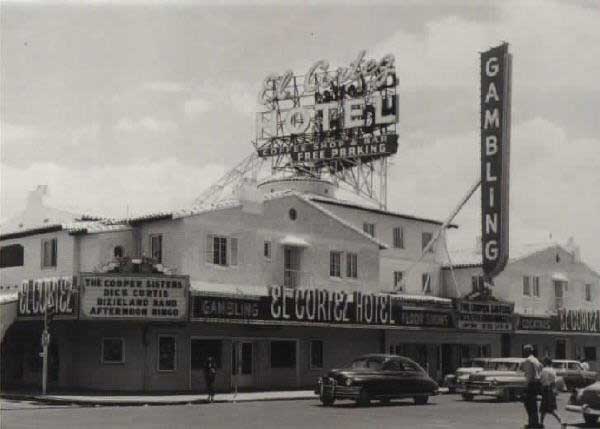
Saturday, October 22
The El Cortez Hotel will be the venue for this free event co-sponsored
by the City of Las Vegas. There will be food and drink, followed
by three expert panels. After the panel presentation there will be a
reception at the Morelli House.
1:00 pm “Mid-Century Life Style Evolution” Local author and
architect, Robert Fielden (Creating Place: Remaking America Green )
leads a discussion with author and architectural historian, Peter Moruzzi
and others on the profound impact of midcentury design and architecture
on American life in the middle of the 20th century.
2:00 pm “Family Feud: Havana vs. Las Vegas in the 1950s” Peter Moruzzi, presents an illustrated presentation from his book, Havana Before Castro-When Cuba Was a Tropical Playground.
Before Castro’s revolution, Havana and Las Vegas were rivals for the title of the “Monte Carlo of the Americas.” Cuba’s exotic tropical setting, wild reputation, close proximity, and supportive government inspired the mob to invest heavily in fabulous hotel-casinos such as the Capri, Riviera, and Nacional. Yet, many of these same investors were also among Vegas’ biggest boosters - Moe Dalitz, Sam Tucker, and front man Wilbur Clark. In 1958, the Nevada Gaming Control Board forced them to choose, Havana or Las Vegas, but not both.
3:00 pm “Dolls, Dons, and Dictators,” Architectural historian, Peter Moruzzi (Havana Before Castro – When Cuba Was a Tropical Playground); author Wendy Mazaros (Vegas Rag Doll); Myer Lansky II; and local author and historian Michael Green engage in a spirited and expanded discussion about the parallel worlds of Las Vegas and Cuba, drawing from their insights and some of their own personal real life
experiences.
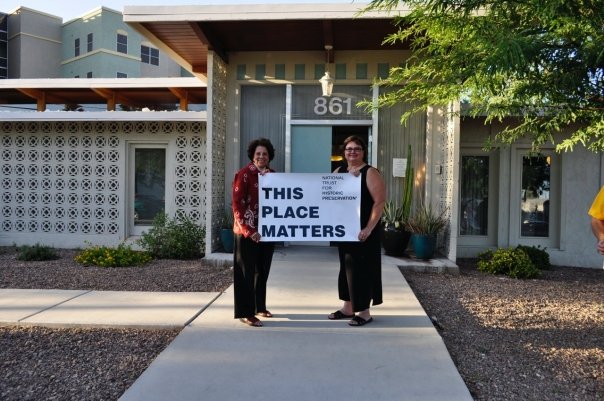
4:00 pm - 6 pm “Cha, Cha, Cha” Cuban inspired reception with music,
drink and refreshment at the Morelli House, 861 E. Bridger.
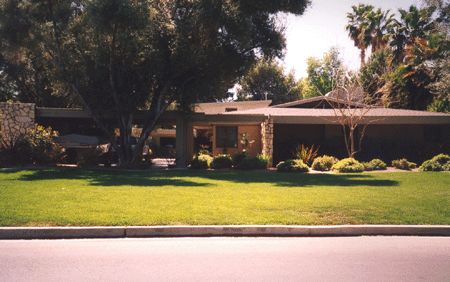
Sunday, October 23
Mid-Mod Bus Tour
Hosted by well known realtor and mid-century modern real estate expert
Jack LeVine, guests will take a four-hour tour on an open double-decker
bus through iconic mid-century Las Vegas neighborhoods.
In addition to touring neighborhoods, the bus will make several stops to peek inside
select properties. Bus will depart and return to parking lot at Boulevard
Mall. Time: 12 noon – 4 pm.
Event Price: $30.00
Should be a lot of fun as well as informative. So if you love mid-century modern, get your tickets NOW!!!
Got a Moe Dalitz Story?
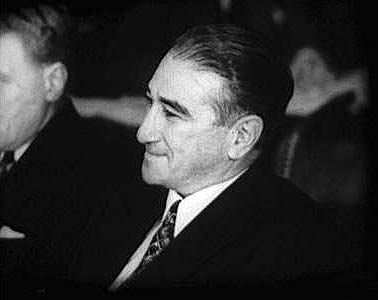
In his later years he was known for his philantrophy, in his younger years he was a member of Cleveland's Purple Gang, in his mid-years, he was the mob's man in Las Vegas. When Wilbur Clark fell into financial problems with the Desert Inn, Moe helped him out and, in doing so, got controlling interest in the hotel.
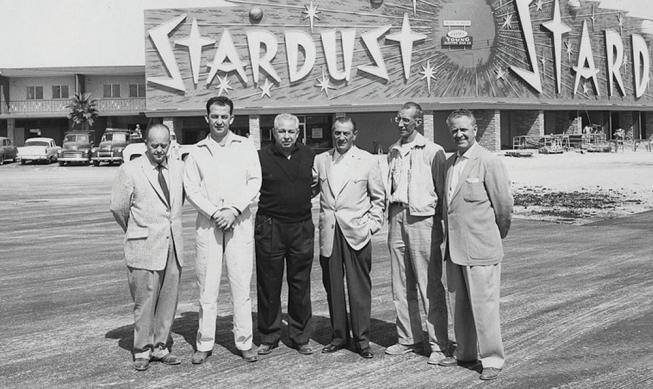
When Tony Cornero ran into financial problems while building the Stardust, Moe was there, all to happy to help out. When Cornero took his gambling jones too far at a craps table one evening and dropped dead, Moe and company saw their chance to take control.
Moe was the go-to man throughout the history of the Las Vegas Strip in the Classic Las Vegas era.
He saw a chance to cash out with a bundle when Howard Hughes told Robert Maheu to go tell Moe that Hughes wasn't leaving the Desert Inn penthouse in time for the New Year's celebration of 1966. Moe said he had to go. When push came to shove, Hughes bought the hotel and Moe was, in the end, financially, a happy, happy man.
He was always philanthropic, like many of the old casino operators were. They knew that giving back to the community was a way to keep that target off their back. He helped build Sunrise Hospital. He worked with Irwin Molasky to build the Boulevard Mall and Paradise Palms. Over the years, he burnished that philanthropic halo as much as he could.
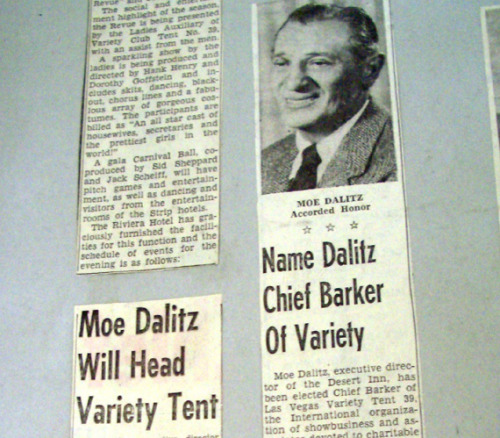
If you knew Moe or have stories about Moe, John L. Smith at the Las Vegas Review-Journal wants to hear from you. He is helping gather stories about Moe because Moe's daughter, Suzanne Dalitz- a journalist in her own right, is writing a book.
So, if you knew Moe or have stories about Moe, contact John L. here.
When Sen. Kefauver came to town

photo courtesy of Life Magazine
Sixty years ago today (Monday, Nov. 15th) , Senator Estes Kefauver and his committee came to Las Vegas to further their investigation into organized crime.
Kefauver was a Senator from Tennessee. In 1950, he began an investigation into organized crime. The committee was officially known as the Senate Special Committee to Investigate Crime in Interstate Commerce but quickly became known as the Kefauver hearings.
Kefauver and his committee (and the press) traveled around the country from Kentucky to the Mid-West to Nevada in their quest for more information on the mob. They traveled to 14 cities and interviewed over 600 people including Frank Costello. Costello made himself famous by refusing to allow his face to be filmed during his questioning and then staged a much-publicized walkout.
By televising the hearings at a time when Americans were just beginning to buy televisions and were entranced by the box, Kefauver brought the idea of organized crime and the mob into the homes and appliance stores of Americans around the country. Kefauver rode that wave of popularity and ran for president twice.
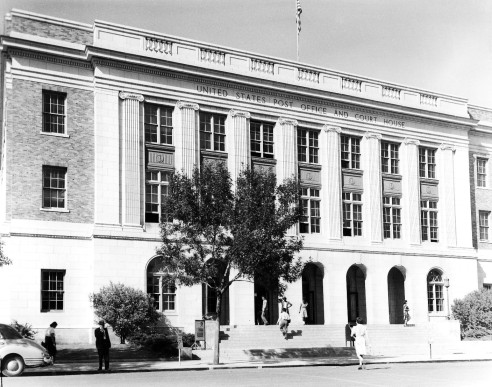
By the time Kefauver and his committee rolled into Las Vegas via train, they had a list of interviewees that included Wilbur Clark and Moe Dalitz among others. They convened in the Federal courthouse and post office. Dalitz was quoted as telling Kefauver and his committee who criticized him for being a bootlegger, "If you hadn't have drunk it, I wouldn't have bootlegged it."

After two hours, the committee adjourned and went on a field trip to Hoover Dam. which had little or nothing to do with organized crime but is one of the great architecural marvels of the 20th Century.
The aftermath of the Kefauver hearings did have an upside for Las Vegas and Nevada. The other cities that were involved in gambling, it was illegal there. Here in Las Vegas (and throughout Nevada) gambling was legal.
Organized crime began to seriously look at Las Vegas as their headquarters for gambling and over the next few years that relationship grew and took on more importance than Estes Kefauver and his committee ever intended or ever realized. It would be another 30 years before Las Vegas was able to break the mob's hold on Las Vegas.
To honor this event, the people behind the Organized Crime and Law Enforcement Museum ( better known as the Mob Museum where the hearings were held) are having a media event. Mayor Oscar Goodman (for those who love irony, Goodman as a mob attorney defended his clients in the courthouse) and others will be in attendance.

Dr. Michael Green and Las Vegas History!
One of my favorite people is Dr. Michael Green. He teaches history at the College of Southern Nevada, he's a familiar face to my Untold Stories class, is one of my go-to guys when I need a historic question answered and is just a terrific guy.
He is also our inaugural guest for a new feature here at Classic Las Vegas. I will be interviewing various history and cultural gurus in Las Vegas right here.
Dr. Mike was kind enough to help me kick this new feature off.
So, without further ado here's Dr. Mike:
1) Why do you enjoy teaching Las Vegas history?
Besides teaching Las Vegas history—and general surveys—I specialize in the Civil War era. I would love to interview Lincoln or someone who knew him fairly well, but that doesn’t seem possible. But in Las Vegas, the people who made the history are here or one generation removed, and that adds an excitement and interest level for me and, I think, for others.
Also, to refer to my example, while there remains a great deal we do not know about the Civil War era, we know a lot. I always find it more interesting to study something not very well known to try to learn more about it, and so much of Las Vegas’s history is uncharted territory. Also, it is right here, waiting for us. I like to think of myself as being a public servant, and I think we serve the public when we do research on our community’s history.
2) Which part of Las Vegas history do you think needs more of the spotlight?
Ha! Just about all of it! Even the Strip, which gets so much attention—how much do we know about the business operations and the entertainment history? We need to know a lot more about what went on here in the community at all times, and especially before the dam. There have been some good studies of the broader Las Vegas community, but we need a lot more specialized work on everything from women to religion.
3) Which is your favorite era of Las Vegas history and why?
If you asked me another day, my answer would be different. To turn it around, I would find it fascinating to have been here when the Stewarts and Kiels were about the only ones around in the late nineteenth century and see just what was really going on. But I incline toward the 1950s: interesting people with interesting backgrounds, the Strip and downtown expanding, growth fast but reasonable, political change, incredible entertainment, and a civil rights movement really ramping up.
4) What is the significance of Las Vegas before WWII and in the post-war era?
Do you have a year for me to answer? Before World War II, Las Vegas wasn’t terribly significant. It was a pit stop and a small tourist town between Los Angeles and Salt Lake, dependent on the railroad first for jobs in its repair shops and then, when the railroad moved the shops, on tourists coming through on the train or via the old highway. Not that that era isn’t worthy and in need of further study, but Las Vegas didn’t matter yet on a regional and national—even international—scale in the way that it would and does. I think the era is incredibly valuable for us to examine for harbingers of what was to come, locally and nationally.
As for the postwar era, in 1994, Time proclaimed Las Vegas “the all-American city.” At about the same time, Marc Cooper did a great piece in The Village Voice about how Las Vegas operated, and it was far less, shall we say, glamorous than Time’s version.
I think that Las Vegas is in some ways symbolic of postwar America: a greater movement toward leisure and instant gratification, thanks partly to social changes (suburbanization, different mores and morals) and partly to inventions that make them possible (computers and jet airplanes). Las Vegas also is a fascinating way to look at the evolution of entertainment: showrooms used to resemble the Ed Sullivan show, which resembled vaudeville.
Now, with shorter attention spans, we have one-person shows with lots of bells and whistles or Cirque shows that are not in themselves star vehicles but sometimes are related to stars and/or use those bells and whistles.
5) What are your thoughts on the "Casino" the movie and myth vs. reality?
Let’s start with the point that “Casino” is a marvelous film, as film. It also does a very good job of conveying its time or milieu. Martin Scorsese and Nicholas Pileggi captured the aura of the time. The problem is that it’s terrible history.
For storytelling purposes, they combined several politicians into one, made Ace Rothstein look far abler than Lefty Rosenthal actually was (understandable when you have Robert DeNiro in the lead role), and attached far more significance to the affair between Joe Pesci’s and Sharon Stone’s characters than it actually had.
The reality is that the mob’s fall here had a lot more to do with federal and state investigations, which don’t transfer well to the screen, and Rosenthal’s incredible arrogance, best displayed in his confrontation with then-Gaming Commission chairman Harry Reid and his abominable television show.
6) Is the "Green Felt Jungle" a good book on the mob if so, why or why not?
My answer is yes and no. As with most books in that genre, Ed Reid and Ovid DeMaris have a lot of good information but are more interested in heat than in light. Also, a significant amount of the book is stuff that Reid reported in the Las Vegas Sun nearly a decade before—the Thunderbird case. But it has a lot of useful, interesting information, and it’s certainly a good read.
Thank you Dr. Mike!



